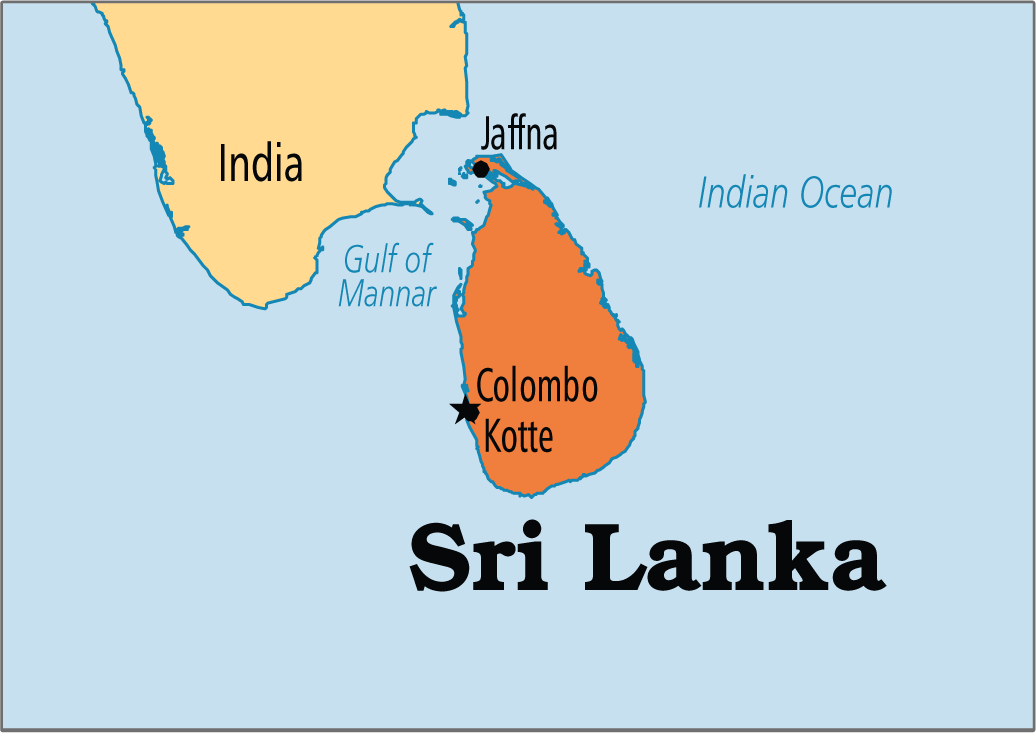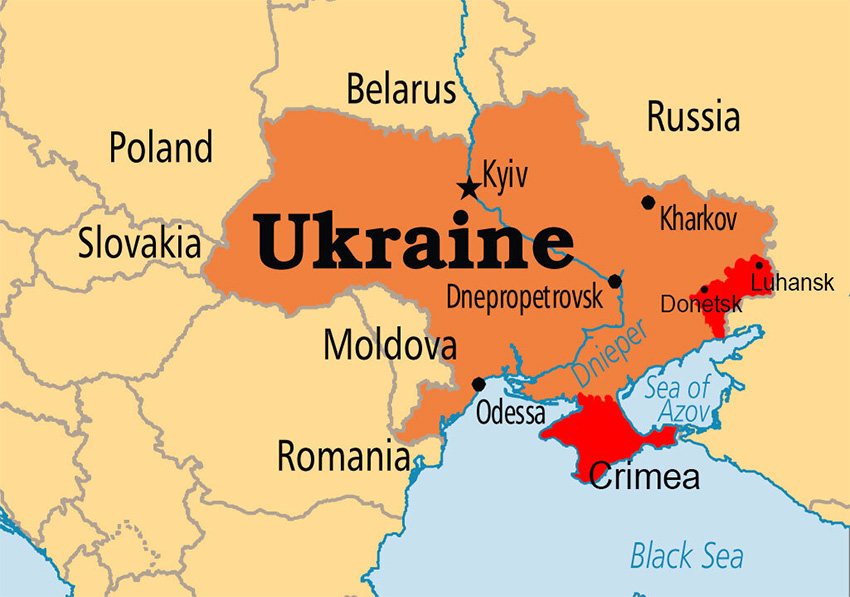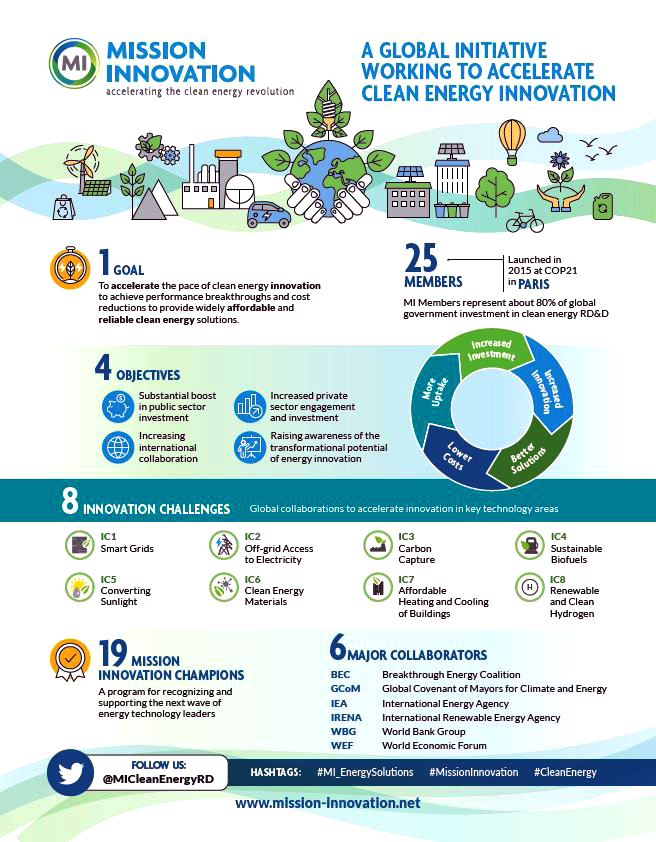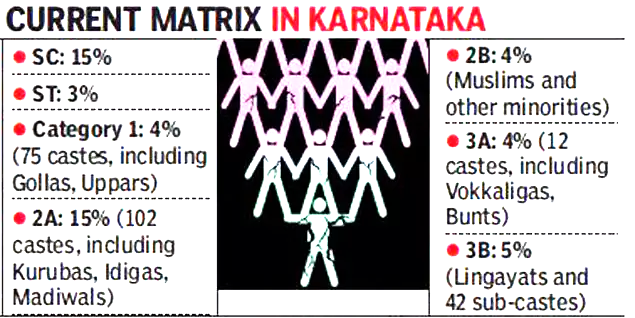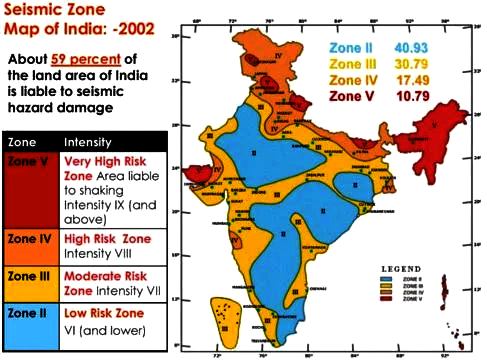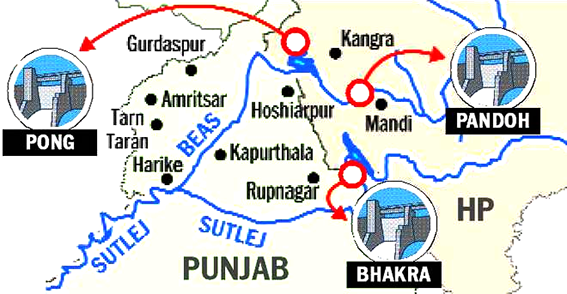International Relations
China’s New Project in Sri Lanka
Why in News
Recently, a Chinese company has won a contract to set up hybrid wind and solar energy projects on three Sri Lankan islands off the northern Jaffna peninsula 45 km from Rameswaram in Tamil Nadu.
- Asian Development Bank (ADB) will fund the project, which will come up on Delft, Nainativu and Analativu, three islands in the Palk Strait off Jaffna peninsula.
Key Points
- About the Islands:
- Delft, the largest of the three islands, is the closest to Rameswaram, Tamil Nadu, which lies to the island’s south west.
- Between the two is Kachchativu, the tiny island that India ceded to Sri Lanka in 1974.
- The waters around these islands are an area of contest and rivalry between Tamil Nadu and Jaffna fishers.
- The matter has been on the bilateral agenda for decades.
- India and Sri Lanka agreed to set up a Joint Working Group (JWG) on Fisheries in 2016 between the Ministry of Agriculture and Farmers Welfare of India and Ministry of Fisheries and Aquatic Resources Development of Sri Lanka as the mechanism to help find a permanent solution to the fishermen issue.
- Delft, the largest of the three islands, is the closest to Rameswaram, Tamil Nadu, which lies to the island’s south west.
- Sri Lanka’s Stand:
- It cannot be blamed for this decision, because the project is backed by the ADB, which has its “own procurement guidelines that should be followed by the borrower”.
- India’s Concern:
- The project site’s proximity to the Indian coastline.
- Chinese presence in the vicinity is not welcomed especially when India already has many unresolved issues with China.
- This deal came at a time when India’s confrontation with China in Ladakh is yet to be resolved.
- Recently, the Sri Lankan government cancelled the contract with India and Japan for the Eastern Container Terminal (ECT).
- The tripartite agreement, signed by India, Sri Lanka and Japan, proposed to develop the ECT, which is located at the newly expanded southern part of the Colombo Port.
- For India, the ECT deal was important as around 70% of transhipment that takes place through it is India-linked. The ECT is also considered more strategic than any other in Colombo Port.
- The project site’s proximity to the Indian coastline.
- India’s Stand:
- India had lodged a strong protest with the Sri Lankan government on the contract to the Chinese company.
- In 2018, India voiced concern over China’s USD 300 million housing project for war-affected areas, accusing the Resettlement Ministry [of the former government] of holding an “opaque” bidding process.
- The project was eventually dropped.
- In 2018, India voiced concern over China’s USD 300 million housing project for war-affected areas, accusing the Resettlement Ministry [of the former government] of holding an “opaque” bidding process.
- India had lodged a strong protest with the Sri Lankan government on the contract to the Chinese company.
China’s Rising Influence in South Asia
- Recent Initiative:
- In January 2021 China held its third multilateral dialogue virtually with countries from South Asia to take forward closer cooperation on fighting Covid-19 and coordinating their economic agendas, reflecting a new approach in Beijing’s outreach to the region.
- Other Initiatives:
- According to the American Enterprise Institute’s China Global Investment Tracker, China has committed around 100 billion USD in the economies of Afghanistan, Bangladesh, the Maldives, Pakistan, Nepal and Sri Lanka.
- China is now the largest overseas investor in the Maldives, Pakistan, and Sri Lanka.
- According to the American Enterprise Institute’s China Global Investment Tracker, China has committed around 100 billion USD in the economies of Afghanistan, Bangladesh, the Maldives, Pakistan, Nepal and Sri Lanka.
- Concerns for India:
- Security Concerns:
- Growing cooperation between Pakistan and China.
- Increasing nexus between Nepal and China.
- Acceptance to China-Pakistan Economic Corridor by south asian countries.
- Leadership Roles in South Asia:
- It shows increasing chinese presence in south asia and its acceptance by the countries as a torch bearer for the region which India wants for itself.
- Economic Concerns:
- Over the past decade, China has replaced India as the major trading partner of several South Asian countries.
- For instance, the share of India’s trade with Maldives was 3.4 times that of China’s in 2008. But by 2018, China’s total trade with Maldives slightly exceeded that of India.
- China’s trade with Bangladesh is now about twice that of India. China’s trade with Nepal and Sri Lanka still lags India’s trade with those countries but the gap has shrunk.
- Security Concerns:
Way Forward
- India does not have the economic capacity as China. Thus it should cooperate with China for the development of these countries such that fruits of development collectively reach South Asia. Further India should invest in countries where China falls short and maintain its good will in South Asia and prevent these nations from slipping off from India’s Influence.
- Along with strongly condemning the plans for extension of the China-Pakistan Economic Corridor, India also needs to focus more on its traditional and cultural ties to improve relations with its neighbours.
International Relations
India - Ukraine
Why in News
Recently, Ukraine has shown interest to procure some military hardware from India in addition to efforts to deepen its presence in the Indian defence market.
- It is in sync with Indian defence sector reforms and Atmanirbhar Bharat Abhiyan which includes making India self reliant in defence manufacturing.
Key Points
- About:
- Ukraine has signed four agreements worth USD 70 million which includes sale of new weapons as well as maintenance and upgrades of existing ones (R-27 air-to-air missiles) in service with the Indian armed forces.
- Ukraine also showed its intent to sell India its AN-178 medium transport aircraft.
- Ukraine is currently upgrading the AN-32 transport fleet of the Indian Air Force (IAF) under a deal finalised in 2009.
- The Ukraine team also held discussions with the Defence Research and Development Organisation (DRDO) and looked at possible collaborations in research and development.
- India-Ukraine Relations:
- Diplomatic Relations:
- Immediately after the breakup of the Soviet Union, the Government of India recognized the Republic of Ukraine as a sovereign independent country in December 1991.
- The Embassy of India in Kyiv was established in May 1992 and Ukraine opened its Mission in New Delhi in February 1993.
- India and Ukraine enjoy warm and friendly relations and cooperate in areas like Education, Mutual Legal Assistance and Outer Space cooperation.
- Defence Relations:
- Ukraine has been a source of military technology and equipment for India since its independence.
- Ukraine manufactures the R-27 air-to-air missiles which are in use by the IAF on its SU-30MKI fighters.
- Now, India is also supplying its weapons to Ukraine to enhance defence cooperation between the two countries.
- Ukraine has been a source of military technology and equipment for India since its independence.
- Trade:
- India is Ukraine’s largest export destination in the Asia-Pacific and the fifth largest overall export destination.
- Pharmaceuticals account for the majority of Indian exports to Ukraine.
- Culture:
- There are more than 30 Ukrainian cultural associations/groups spread across the country, engaged in promoting Indian dances.
- There are about 18,000 Indian students studying in Ukraine, mainly in the field of medicine. Indian business professionals work predominantly in the fields of pharmaceuticals, IT, engineering, medicine, education, etc.
- Challenges:
- The rift between Russia and Ukraine, which burst out into armed combat when Moscow annexed the Crimean Peninsula from Ukraine in 2014, has created a potential dilemma for India.
- Recently, a Russian press release has objected to the overhaul in Ukraine of military equipment built and sold by Russia.
- Russia has begun objecting to customers dealing with Ukraine.
- The potential for trouble with Russia exists because the Indian Air Force (IAF) is currently collaborating with Ukraine to overhaul its fleet of AN-32s.
- Diplomatic Relations:
Ukraine
- Location:
- Ukraine, a country located in eastern Europe. The capital is Kyiv (Kiev), located on the Dnieper River in north-central Ukraine.
- Surrounding Countries and Seas:
- Ukraine is bordered by Belarus to the north, Russia to the east, the Sea of Azov and the Black Sea to the south, Moldova and Romania to the southwest, and Hungary, Slovakia, and Poland to the west.
- In the far southeast, Ukraine is separated from Russia by the Kerch Strait, which connects the Sea of Azov to the Black Sea.
- History:
- With the dissolution of the U.S.S.R. (the Soviet Union) in December 1991, Ukraine gained full independence.
- The country changed its official name to Ukraine, and it helped to found the Commonwealth of Independent States (CIS), an association of countries that were formerly republics of the Soviet Union.
- Recent Issues:
- Recently, Ukraine got at loggerheads with Russia over the occupation of Crimean peninsula by Russia.
- In June 2020, Ukraine became ‘Enhanced Opportunity Partners’ under the Partnership Interoperability Initiative of North Atlantic Treaty Organization (NATO).
- Ukraine is also seeking European Union and NATO membership, a move that could obstruct attempts to resolve other tensions with Russia.
Biodiversity & Environment
Mission Innovation 2.0
Why in News
Recently, the Union Minister of Science & Technology addressed the Mission Innovation (MI) to mark the beginning of phase-2 of the mission or Mission Innovation 2.0.
- India played a leadership role in MI Steering Committee and is a member of the Analysis and Joint Research and Business & Investor Engagement sub-groups.
Key Points
- Mission Innovation:
- Formation:
- Mission Innovation was announced on 30th November 2015, on the sidelines of the Paris Climate Agreement to undertake ambitious measures to combat climate change.
- Membership:
- It is a global initiative of 24 countries and the European Union to accelerate global clean energy innovation.
- Principle:
- Commitment by all members to seek to double their clean energy innovation investments over five years in selected priority areas.
- Each member according to its own priorities, policies, processes, and laws independently determines the best use of its funding and defines its own Research & Development priorities and path to reach the doubling goal.
- In many cases, MI members prioritise parts of their whole energy innovation budget within their baseline.
- Objectives:
- Enhance the public sector investment to a substantial level.
- Increased private sector engagement and investment.
- Increase international collaboration.
- Raising awareness of the transformational potential of innovation.
- Innovation Challenges (IC):
- Innovation challenges are a major part of the mission innovation that is aimed at leveraging research, development, and demonstration (RD&D) in technology areas that could ultimately result in effective ways to reduce greenhouse gas emissions, increasing energy security, and creating new opportunities for clean economic growth.
- There are 8 innovation challenges under the mission innovation:
- IC1 – smart grids, IC2 – Off-grid access to electricity, IC3 – Carbon capture, IC4 – Sustainable biofuels, IC5 – Converting sunlight, IC6 – Clean energy materials, IC7 – Affordable cooling and heating of buildings, IC8 – Renewable and clean hydrogen.
- The first phase has shown that work done under ICs have mobilized in a relatively short period, relying on members' leadership and voluntary efforts to advance IC objectives.
- These resources have dramatically accelerated the availability of the advanced technologies that will define a future global energy mix which is clean, affordable, and reliable.
- Formation:
- Mission Innovation 2.0:
- To achieve the shared goal of accelerating innovation, all the members have agreed to develop a second phase (2.0) that includes:
- An enhanced Innovation Platform building on current activities to strengthen the global clean energy innovation ecosystem and to accelerate learning.
- New public-private innovation alliances – Missions – built around ambitious and inspirational goals backed by voluntary commitments that can lead to tipping points in the cost, scale, availability, and attractiveness of clean energy solutions.
- To achieve the shared goal of accelerating innovation, all the members have agreed to develop a second phase (2.0) that includes:
- Indian Initiatives Aligned with the Mission:
- Clean Energy International Incubation Centre:
- To support the start-up innovation ecosystem, the Clean Energy International Incubation Centre established by the Department of Biotechnology, India under a Public Private Partnership model has played a crucial role.
- Increased Solar Capacity:
- India has increased solar installed capacity by 13 times and expanded its non-fossil fuel-based power generation to 134 Gigawatts, about 35% of total power generation.
- The National Solar Mission (a part of the National Action Plan on Climate Change) helped India to increase its solar capacity.
- India has embarked on an ambitious target of having 450 Gigawatts of renewable energy by 2030.
- India has increased solar installed capacity by 13 times and expanded its non-fossil fuel-based power generation to 134 Gigawatts, about 35% of total power generation.
- Biofuels:
- India is also working to considerably increase the proportion of the biofuel blend in petrol and diesel:
- Ethanol Blending Programme (EBP): It aims at blending ethanol with petrol, thereby bringing it under the category of biofuels and saving millions of dollars by cutting fuel imports.
- The 2018 Biofuel Policy has the objective of reaching 20% ethanol-blending and 5% biodiesel-blending by the year 2030.
- Five Centres of excellence in Bioenergy supported by Department of Biotechnology in India are working on both fundamental and translational research for advanced bio-fuels like biobutanol, biohydrogen and biojet fuels.
- India is also working to considerably increase the proportion of the biofuel blend in petrol and diesel:
- Ujjwala Yojana:
- Pradhan Mantri Ujjwala Yojana (PMUY) which is the world’s most extensive clean cooking fuel programme was launched in 2016 and is implemented by the Ministry of Petroleum and Natural Gas through its Oil Marketing Companies.
- Through PMUY, initially, 5 crores below poverty line (BPL) households were targeted for providing deposit free LPG connections to BPL households by 31st March, 2019. This target has been achieved.
- India has released around 150 million connections so far.
- Avoided Emission Framework for a sustainable future:
- India and Sweden under a partnership have developed an Avoided Emission Framework for a sustainable future.
- Under this partnership, eight companies have been selected to demonstrate an initial 100 million tons of potential CO2 emission reduction by 2030.
- Clean Energy International Incubation Centre:
Indian Polity
Kuruba Community: Karnataka
Why in News
A massive rally was organised by the Kuruba community to urge the state government of Karnataka to recommend the Centre inclusion of the community in the Scheduled Tribe (ST) list.
Key Points
- Background:
- From Independence, the community enjoyed the ST status. In 1977, Justice LG Havanur, who headed the backward class commission, moved the Kurubas to the ‘most backward classes’ category from ST list.
- However, the Commission brought in an area restriction stating that those living in Bidar, Yadgir, Kalaburagi and Madikeri with Kuruba synonyms can continue to avail the ST benefits.
- About Kurubas:
- The Kurubas of Karnataka are a traditional sheep rearing community.
- Presently, the Kurubas constitute 9.3% of the state’s population and come under the backward classes category.
- Kurubas are the fourth largest caste in Karnataka after the Lingayats, Vokkaligas and Muslims.
- Kurubas in other states are known by different names – as Dhangars in Maharashtra, Rabaris or Raikas in Gujarat, Dewasis in Rajasthan and Gadarias in Haryana.
- Related Developments:
- Demands by Lingayat Community: Three years earlier, the Lingayat community demanded a separate minority religion tag in Karnataka.
- The Lingayat sub-sect Panchamasali has also demanded its inclusion in the 2A category of backward classes - which currently provides 15% reservations to backward castes.
- Justice HN Nagamohan Das Commission:
- The Justice HN Nagamohan Das Commission was constituted to look into increasing the existing reservation for SCs from 15% to 17% and for the STs from 3% to 7% by not exceeding the overall 50% reservation quota as mandated by the Supreme Court's order of 1992.
- If Kurubas are to be declared ST as per their demand, the quota for STs will have to be proportionally increased.
- The Justice HN Nagamohan Das Commission was constituted to look into increasing the existing reservation for SCs from 15% to 17% and for the STs from 3% to 7% by not exceeding the overall 50% reservation quota as mandated by the Supreme Court's order of 1992.
- Challenge:
- The larger issue is that the State has already hit the apex court set 50% cap on reservation and any hike poses a challenge.
- Demands by Lingayat Community: Three years earlier, the Lingayat community demanded a separate minority religion tag in Karnataka.
- Present Reservation Quota in Karnataka:
- Adhering to the Supreme Court’s 1992 order, Karnataka has capped the reservation to 50% where 32% has been earmarked for backward classes, including Muslims, Christians and Jains, 15% for SCs and 3% for STs.
- This reservation quota has been further pared into categories: Category 1 (4%), Category 2A (15%), Category 2B (4%), Category 3A (4%), Category 3B (5%), SC (15%) and ST (3%).
Scheduled Tribe
- About
- Article 366 (25) of the Constitution refers to Scheduled Tribes as those communities, who are scheduled in accordance with Article 342 of the Constitution.
- Article 342 says that only those communities who have been declared as such by the President through an initial public notification or through a subsequent amending Act of Parliament will be considered to be Scheduled Tribes.
- The list of Scheduled Tribes is State/UT specific and a community declared as a Scheduled Tribe in a State need not be so in another State.
- Essential Characteristics:
- The Constitution is silent about the criteria for specification of a community as a Scheduled Tribe. However, following are the traits that distinguish Scheduled Tribe communities from other communities.
- Primitiveness,
- Geographical isolation,
- Shyness, and
- Social, educational and economic backwardness.
- The Constitution is silent about the criteria for specification of a community as a Scheduled Tribe. However, following are the traits that distinguish Scheduled Tribe communities from other communities.
- Particularly Vulnerable Tribal Groups:
- There are certain Scheduled Tribes, 75 in number known as Particularly Vulnerable Tribal Groups (PVTGs), who are characterised by;
- Pre-agriculture level of technology,
- Stagnant or declining population,
- Extremely low literacy, and
- Subsistence level of economy.
- There are certain Scheduled Tribes, 75 in number known as Particularly Vulnerable Tribal Groups (PVTGs), who are characterised by;
Social Justice
Mental Health and Men
Why in News
As per the data of the Ministry of Social Justice and Empowerment, 70% of callers to the ‘Kiran Helpline’, launched in September 2020, were men. Most of the calls have been from young adults.
- The 24/7 toll-free helpline ‘Kiran’ provides support to people facing anxiety, stress, depression, suicidal thoughts and other mental health concerns.
Key Points
- Data Analysis:
- Gender & Mental Health: Out of the 13,550 new calls received, 70.5% were from males and 29.5% from females.
- Vulnerable Age Group: The majority of callers (75.5%) were in the age group of 15 to 40 years, while 18.1% in the 41 to 60 age group.
- Major Issues: Majorly the challenges faced by the callers were related to anxiety and depression; while few others included pandemic-related challenges, suicidal tendency, substance abuse and others miscellaneous.
- Issues Related to Male Mental Health:
- Traditional Gender Roles: Societal expectations and traditional gender roles play an important role in why men are less likely to discuss or seek help for their mental health problems.
- Ignoring Warning Signs: For men, the warning signs of mental disorders include irritability, trouble focusing, tiredness or listlessness, aches and pains, alcohol or drug abuse and more.
- Lack of Proper Attention: Research on men’s health issues has been given relatively low priority. Due to lack of funding and proper attention, the situation becomes more serious.
- Increase in Number of Suicides: In 2018, around 250 Indian men took their own lives per day - more than twice the number of women.
Mental Health
- About:
- According to the WHO, mental health is ‘a state of well-being in which the individual realizes his or her own abilities, can cope with the normal stresses of life, can work productively and fruitfully, and is able to make a contribution to his or her community.’
- Like Physical health, Mental health is also important at every stage of life, from childhood and adolescence through adulthood.
- Challenges:
- High Public Health Burden: An estimated 150 million people across India are in need of mental health care interventions, according to India’s latest National Mental Health Survey 2015-16.
- Lack of Resources: Low proportion of the mental health workforce in India (per 100,000 population) include psychiatrists (0.3), nurses (0.12), psychologists (0.07) and social workers (0.07).
- Low financial resource allocation of just over a percent of GDP on healthcare has created impediments in public access to affordable mental healthcare.
- Other Challenges: Poor awareness about the symptoms of mental illness, social stigma and abandonment of mentally ill, especially old and destitute, leads to social isolation and reluctance on part of family members to seek treatment for the patient.
- This has resulted in a massive treatment gap, which further worsens the present mental illness of a person.
- Steps Taken by the Government:
- National Mental Health Program (NMHP):
- To address the huge burden of mental disorders and shortage of qualified professionals in the field of mental health, the government has been implementing the National Mental Health Program (NMHP) since 1982.
- The Program was re-strategized in 2003 to include two schemes, viz. Modernization of State Mental Hospitals and Up-gradation of Psychiatric Wings of Medical Colleges/General Hospitals.
- Mental HealthCare Act 2017:
- It guarantees every affected person access to mental healthcare and treatment from services run or funded by the government.
- It has significantly reduced the scope for the use of Section 309 IPC and made the attempt to commit suicide punishable only as an exception.
- Section 115(1) of the MHCA states: “Notwithstanding anything contained in section 309 of the Indian Penal Code any person who attempts to commit suicide shall be presumed, unless proved otherwise, to have severe stress and shall not be tried and punished under the said Code.”
- National Mental Health Program (NMHP):
Way Forward
- Many researches have emphasized the importance of ‘disrupting how men traditionally think about depression and suicide by breaking down the stigma that surrounds these topics’ through nationwide campaigns.
- Originating a dialogue, sustaining that dialogue, challenging outdated social mores, and giving a voice to the voiceless without fear of exclusion and mockery is what needs to be undertaken to ensure that all people’s mental health is taken seriously and addressed in a manner that is dignified and respectful.
- Modern techniques, such as web-based interventions and electronic health (e-health) tools, can also be developed and utilized to reach out to people who might not otherwise seek help.
Geography
Mapping Seismic Hazard of Eastern Himalaya
Why in News
Recently, scientists have found the first geological evidence of an earthquake on the border of Assam and Arunachal Pradesh, documented as the Sadiya earthquake in history. This finding could contribute to a seismic hazard map of the eastern Himalaya, which can facilitate construction and planning in the region.
- This site is near the Tuting-Tidding Suture Zone- a major part of the Eastern Himalaya, where the Himalaya takes a sharp southward bend and connects with the Indo-Burma Range.
Key Points
- About:
- Scientists from Wadia Institute of Himalayan Geology (WIHG) carried out a mega trench excavation at Himebasti village, Arunachal Pradesh where the most recent event records the imprints of the 1697 Sadiya earthquake and analysed it with modern geological techniques.
- WIHG is an autonomous institute under the Department of Science and Technology (DST), Government of India.
- Scientists found large tree trunks embedded in the youngest flood deposits at the exit of the Subansiri River (Sadiya town is located roughly 145 km southeast of Subansiri river), suggesting the post-seismic aggradation of the river following an array of aftershocks till six months.
- Aggradation is the term used in geology for the increase in land elevation due to deposition of sediment.
- Aftershocks are earthquakes that follow the largest shock of an earthquake sequence. They are smaller than the mainshock and within 1-2 rupture lengths distance from the mainshock.
- Scientists from Wadia Institute of Himalayan Geology (WIHG) carried out a mega trench excavation at Himebasti village, Arunachal Pradesh where the most recent event records the imprints of the 1697 Sadiya earthquake and analysed it with modern geological techniques.
- Significance:
- Studying the past earthquakes help to determine the seismic potential of the region. This helps in mapping the earthquake hazard of the region and enables syncing the development activities accordingly.
- Arunachal Pradesh, being near the Indo-China Border, and sometimes centre of dispute regarding its ownership, is strategically important.
- A number of development initiatives like constructing roads, bridges and hydropower projects are being undertaken, therefore there is an urgent need for understanding the pattern of seismicity in this region.
- Seismic Hazard Map of India:
- India is one of the highly earthquake affected countries because of the presence of tectonically active young fold mountains, Himalayas.
- India has been divided into four seismic zones (II, III, IV, and V) based on scientific inputs relating to seismicity, earthquakes occurred in the past and tectonic setup of the region.
- Previously, earthquake zones were divided into five zones with respect to the severity of the earthquakes but the Bureau of Indian Standards (BIS) grouped the country into four seismic zones by unifying the first two zones.
- BIS is the official agency for publishing the seismic hazard maps and codes.
- Seismic Zone II:
- Area with minor damage earthquakes corresponding to intensities V to VI of MM scale (MM-Modified Mercalli Intensity scale).
- Seismic Zone III:
- Moderate damage corresponding to intensity VII of MM scale.
- Seismic Zone IV:
- Major damage corresponding to intensity VII and higher of MM scale.
- Seismic Zone V:
- Area determined by pro seismically of certain major fault systems and is seismically the most active region.
- Earthquake zone V is the most vulnerable to earthquakes, where historically some of the country’s most powerful shocks have occurred.
- Earthquakes with magnitudes in excess of 7.0 have occured in these areas, and have had intensities higher than IX.
- Seismic Waves, Richter Scale and Mercalli scale:
- Seismic waves are the vibrations from earthquakes that travel through the Earth and are recorded on instruments called seismographs.
- Seismographs record a zigzag trace that shows the varying amplitude of ground oscillations beneath the instrument.
- The earthquake events are scaled either according to the magnitude or intensity of the shock.
- The magnitude scale is known as the Richter scale. The magnitude relates to the energy released during the earthquake which is expressed in absolute numbers, 0-10.
- The intensity scale or Mercalli scale takes into account the visible damage caused by the event. The range of intensity scale is from 1-12.
- Seismic waves are the vibrations from earthquakes that travel through the Earth and are recorded on instruments called seismographs.
Biodiversity & Environment
Pong Dam Lake Wildlife Sanctuary
Why in News
Over a lakh migratory water birds arrived at the Pong Dam Lake Wildlife Sanctuary in Himachal Pradesh in winter 2020-21.
Key Points
- Location: Kangra District, Himachal Pradesh.
- Formation:
- In 1975, Pong dam was built across the Beas River. It is also called the Pong reservoir or the Maharana Pratap Sagar.
- In 1983, the entire reservoir was declared as a Wildlife Sanctuary by the Himachal Pradesh government.
- In 1994, the Government of India declared it a “Wetland of National Importance”.
- Pong Dam Lake was declared as Ramsar Site in November 2002.
- Destination for Migratory Birds:
- The sanctuary plays host to around 220 species of birds belonging to 54 families. Migratory birds from all over Hindukush Himalayas and also as far as Siberia come here during winter.
- Rivers:
- The lake is fed by Beas River and its numerous perennial tributaries such as Gaj, Neogal, Binwa, Uhl, Bangana, and Baner.
- The lake harbours around 22 species of fish, including rare fish like sal and gad. The adequate water level of the lake makes it an ideal destination to indulge in water sports.
- Vegetation:
- The sanctuary area is covered with tropical and subtropical forests, which shelters a great number of Indian Wildlife animals.
- Flora:
- Eucalyptus, acacia, jamun, shisham, mango, mulberry, ficus, kachnar, amla and prunus.
- Fauna:
- Barking deer, sambar, wild boars, nilgai, leopards and oriental small-clawed otters.
- Avian-Fauna:
- Black-headed gulls, Red necked grebes, plovers, terns, ducks, water-fowl egrets, and more.
National Parks in Himachal Pradesh
- Great Himalayan National Park:
- Great Himalayan National Park, located in the Banjaar sub-division of Kullu district, was officially declared as a National Park in 1999.
- In 2014, the Great Himalayan National Park received the status of being a UNESCO World Heritage Site for its wonderful contribution towards biodiversity conservation.
- Species which are found here are like Greater Blue Sheep, Indian Pika, Rhesus monkey, Himalayan black bear, Himalayan brown bear, Red fox, Mongoose.
- Pin Valley National Park:
- Pin Valley National Park, located in Lahaul and Spiti District, was established in 1987.
- Various endangered species including the snow leopard and Siberian ibex find their natural habitat.
- Inderkilla National Park:
- Inderkilla National Park is located in the Kullu district in Himachal Pradesh and established in 2010.
- Animals of the Himalayan region like leopards, deers and, birds which even include the rare birds of the summer season, and insect species are varied and can be seen from time to time.
- Khirganga National Park:
- Khirganga National Park is located in Kullu and was established in 2010.
- The national park is situated at a height of around 5,500 meters and is spread across an area of about 710 square kilometers.
- Simbalbara National Park:
- Simbalbara National Park is located in the Paonta Valley of Sirmour District.
- The national park was established in 1958 as the Simbalbara Wildlife Sanctuary covering an area of 19.03 square kilometers.
- In 2010, it was turned into a national park by merging an additional 8.88 square kilometers of the area to its boundaries.
Social Justice
Hunter Syndrome: MPS II
Why in News
Two brothers suffering from Mucopolysaccharidosis II or MPS II (Hunter Syndrome, Attenuated Type) have approached the Delhi High Court seeking direction to the Centre and AIIMS to provide them free treatment.
- MPS II is a rare disease that is passed on in families.
Key Points
- About: MPS II mostly affects boys and their bodies cannot break down a kind of sugar that builds bones, skin, tendons and other tissues.
- Cause: It is caused by changes (mutations) of the IDS gene that regulates the production of the iduronate 2-sulfatase (I2S) enzyme.
- This enzyme is needed to break-down complex sugars, known as glycosaminoglycans (GAGs), produced in the body.
- Impact: Lack of I2S enzyme activity leads to the accumulation of GAGs within cells, specifically inside the lysosomes.
- Lysosomes are compartments in the cell that digest and recycle different types of molecules.
- Conditions that cause molecules to build up inside the lysosomes, including MPS II, are called lysosomal storage disorders.
- The accumulation of GAGs increases the size of the lysosomes, which is why many tissues and organs are enlarged in this disorder.
- Symptoms: It is characterized by distinctive facial features, a large head, enlargement of the liver and spleen (hepatosplenomegaly), hearing loss, etc.
- Inheritance:
- MPS II is inherited in an X-linked recessive pattern, which means that this condition occurs almost exclusively in males. Females are generally unaffected carriers of this condition.
- In a family with more than one affected individual, the mother of the affected males must be a carrier. When a carrier female has a child, there is a 25% (1 in 4) chance that she will have an affected son.
Rare Diseases
- A rare disease is a health condition of low prevalence that affects a small number of people compared with other prevalent diseases in the general population.
- Though rare diseases are of low prevalence and individually rare, collectively they affect a considerable proportion of the population.
- 80% of rare diseases are genetic in origin and hence disproportionately impact children.
- Recently, the Delhi High Court has directed the Centre to finalise the National Health Policy for Rare Diseases of 2020 by March 2021 and make operational provision of crowdfunding envisaged under the law for treatment of high-cost rare diseases.

